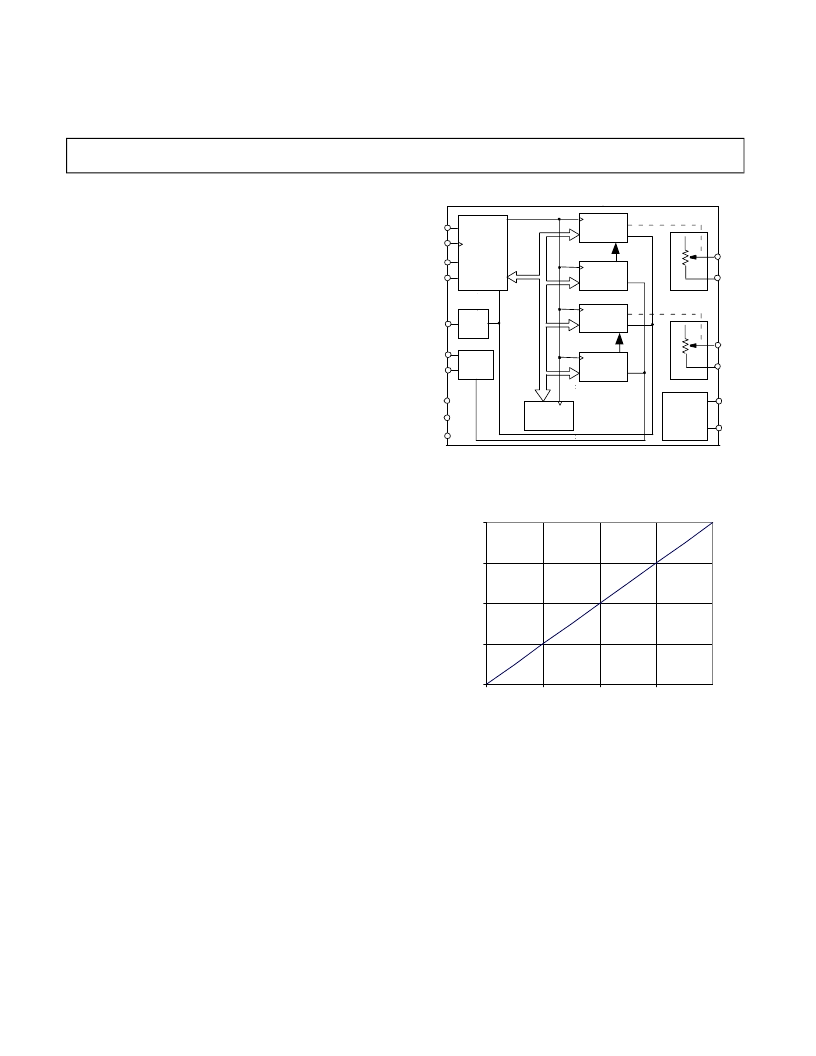- 您現在的位置:買賣IC網 > PDF目錄374017 > ADN2850ACP250-RL7 (ANALOG DEVICES INC) Nonvolatile Memory, Dual 1024 Position Programmable Resistors PDF資料下載
參數資料
| 型號: | ADN2850ACP250-RL7 |
| 廠商: | ANALOG DEVICES INC |
| 元件分類: | 數字電位計 |
| 英文描述: | Nonvolatile Memory, Dual 1024 Position Programmable Resistors |
| 中文描述: | DUAL 250K DIGITAL POTENTIOMETER, 3-WIRE SERIAL CONTROL INTERFACE, 1024 POSITIONS, QCC16 |
| 封裝: | 5 X 5 MM, LFCSP-16 |
| 文件頁數: | 1/18頁 |
| 文件大小: | 270K |
| 代理商: | ADN2850ACP250-RL7 |

PRELIMINARY TECHNICAL DATA
Prelimnary Technical Data ADN2850
a
Nonvolatile Memory, Dual 1024
Position Programmable Resistors
REV PrH, 13, AUG 2001
Information furnished by Analog Devices is believed to be accurate and reliable. However, no
responsibility is assumed by Analog Devices for its use; nor for any infringements of patents or
other rights of third parties which may result fromits use. No license is granted by implication
or otherwise under any patent or patent rights of Analog Devices.
One Technology Way, P.O. Box 9106,
Norwood, MA 02062-9106 U
.
S
.
A
.
Tel: 617/329-4700
Fax:617/326-8703
FEATURES
Dual, 1024 Position Resolution
25K, 250K Ohm Full Scale Resistance
Low Temperature Coefficient -- 35ppm/°C
Nonvolatile Memory
1
Preset Maintains Wiper Settings
Wiper Settings Read Back
Linear Increment/Decrement
Log taper Increment/Decrement
SPI Compatible Serial Interface
+3V to +5V Single Supply or ±2.5V Dual Supply
26 bytes User Nonvolatile Memory for Constant Storage with
Current Monitoring Configurable Function
APPLICATIONS
SONET, SDH, ATM, Gigabit Ethernet, DWDM Laser Diode
Driver Optical Supervisory Systems
GENERAL DESCRIPTION
The ADN2850 provides dual channel, digitally controlled
programmable resistors
2
with resolution of 1024 positions. These
devices perform the same electronic adjustment function as a
mechanical rheostat. The ADN2850’s versatile programming via a
standard serial interface allows sixteen mode of operations and
adjustment including scratch pad programming, memory storing
and retrieving, increment/decrement, log taper adjustment, wiper
setting readback, and extra user defined EEMEM.
In the scratch pad programming mode, a specific setting can be
programmed directly to the RDAC
2
register, which sets the
resistance between terminals W-and-B. The RDAC register can
also be loaded with a value previously stored in the EEMEM
1
register. The value in the EEMEM can be changed or protected.
When changes are made to the RDAC register, the value of the new
setting can be saved into the EEMEM. Thereafter, such value will
be transferred automatically to the RDAC register during system
power ON. It is enabled by the internal preset strobe. EEMEM can
also be retrieved through direct programming and external preset
pin control.
Other key mode of operations include linear step increment and
decrement commands such that the setting in the RDAC register
can be moved UP or DOWN, one step at a time. For logarithmic
changes in wiper setting, a left/right bit shift command adjusts the
level in ±6dB steps.
The ADN2850 is available in the 5mm x 5mm LFCSP-16 Lead
Frame Chip Scale and thin TSSOP-16 packages. All parts are
guaranteed to operate over the extended industrial temperature
range of -40°C to +85°C.
FUNCTIONAL BLOCK DIAGRAM
RDAC1
W1
B1
PWR ON
PRESET
SERIAL
INPUT
REGISTER
RDAC1
REGISTER
PR
WP
CS
ADDRESS
DECODE
RDY
CLK
EEMEM1
EEMEM2
EEMEM
CONTROL
RDAC2
REGISTER
SDI
SDO
26 BYTES
USER EEMEM
V1
V2
CURRENT
I2
I1
VDD
VSS
RDAC1
W2
B2
GND
0%
25%
50%
75%
100%
0
256
512
768
D - Code in Decim al
R
1023
Figure 1. R
WB
(D) vs Decimal Code
Notes:
1.
2.
The term nonvolatile memory and EEMEM are used interchangebly
The term programmable resistor and RDAC are used interchangebly
相關PDF資料 |
PDF描述 |
|---|---|
| ADN2860 | High Bandwidth, CMOS 8-Bit Serial Interface Multiplying D/A Converter; Package: MSOP; No of Pins: 10; Temperature Range: Industrial |
| ADN2870 | High Bandwidth, CMOS 8-Bit Serial Interface Multiplying D/A Converter; Package: MSOP; No of Pins: 10; Temperature Range: Industrial |
| ADN2870ACPZ | High Bandwidth, CMOS 8-Bit Serial Interface Multiplying D/A Converter; Package: MSOP; No of Pins: 10; Temperature Range: Industrial |
| ADN2870ACPZ-RL | 3.3 V Dual-Loop, 50 Mbps to 3.3 Gbps Laser Diode Driver |
| ADN2870ACPZ-RL7 | 3.3 V Dual-Loop, 50 Mbps to 3.3 Gbps Laser Diode Driver |
相關代理商/技術參數 |
參數描述 |
|---|---|
| ADN2850ACP25-RL7 | 制造商:AD 制造商全稱:Analog Devices 功能描述:Nonvolatile Memory, Dual 1024 Position Programmable Resistors |
| ADN2850ARU | 制造商:Analog Devices 功能描述:DUAL 10-BIT PROGRAMMABLE NON-VOLATILE RESISTOR - Bulk |
| ADN2850ARU25 | 制造商:AD 制造商全稱:Analog Devices 功能描述:Nonvolatile Memory, Dual 1024 Position Programmable Resistors |
| ADN2850ARU25-REEL7 | 制造商:AD 制造商全稱:Analog Devices 功能描述:Nonvolatile Memory, Dual 1024 Position Programmable Resistors |
| ADN2850BCP25 | 制造商:Analog Devices 功能描述:Digital Potentiometer 1024POS 25KOhm Dual 16-Pin LFCSP EP 制造商:Rochester Electronics LLC 功能描述:DUAL 9-BIT SPI DIG. POT - Bulk |
發布緊急采購,3分鐘左右您將得到回復。